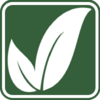| 500Foods shared this story from |
Agronomy, Vol. 10, Pages 1670: Crop Height Measurement System Based on 3D Image and Tilt Sensor Fusion
Agronomy doi: 10.3390/agronomy10111670
Authors: Wan-Soo Kim Dae-Hyun Lee Yong-Joo Kim Yeon-Soo Kim Taehyeong Kim Seong-Un Park Sung-Soo Kim Dong-Hyuck Hong
Machine-vision-based crop detection is a central issue for digital farming, and crop height is an important factor that should be automatically measured in robot-based cultivations. Three-dimensional (3D) imaging cameras make it possible to measure actual crop height; however, camera tilt due to irregular ground conditions in farmland prevents accurate height measurements. In this study, stereo-vision-based crop height was measured with compensation for the camera tilt effect. For implementing the tilt of the camera installed on farm machines (e.g., tractors), we developed a posture tilt simulator for indoor testing that could implement the camera tilt by pitch and roll rotations. Stereo images were captured under various simulator tilt conditions, and crop height was measured by detecting the crop region in a disparity map, which was generated by matching stereo images. The measured height was compensated for by correcting the position of the region of interest (RoI) in the 3D image through coordinate transformation between camera coordinates and simulator coordinates. The tests were conducted by roll and pitch rotation around the simulator coordinates. The results showed that crop height could be measured using stereo vision, and that tilt compensation reduced the average error from 15.6 to 3.9 cm. Thus, the crop height measurement system proposed in this study, based on 3D imaging and a tilt sensor, can contribute to the automatic perception of agricultural robots.

